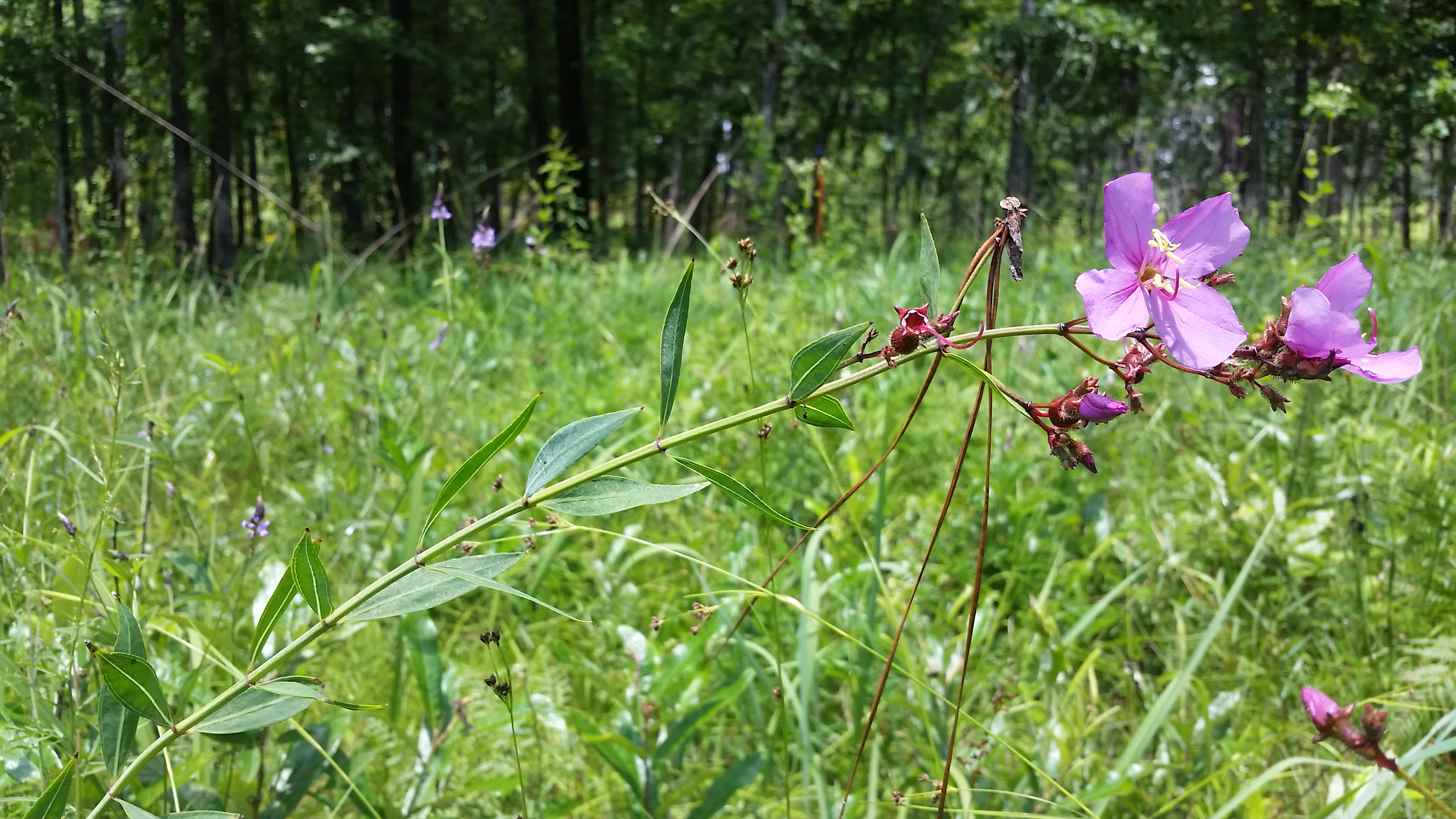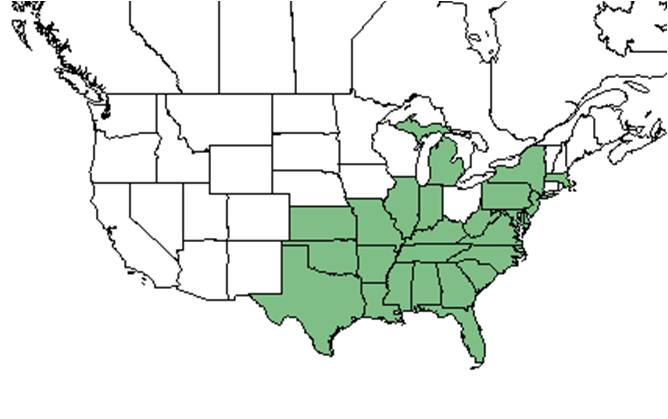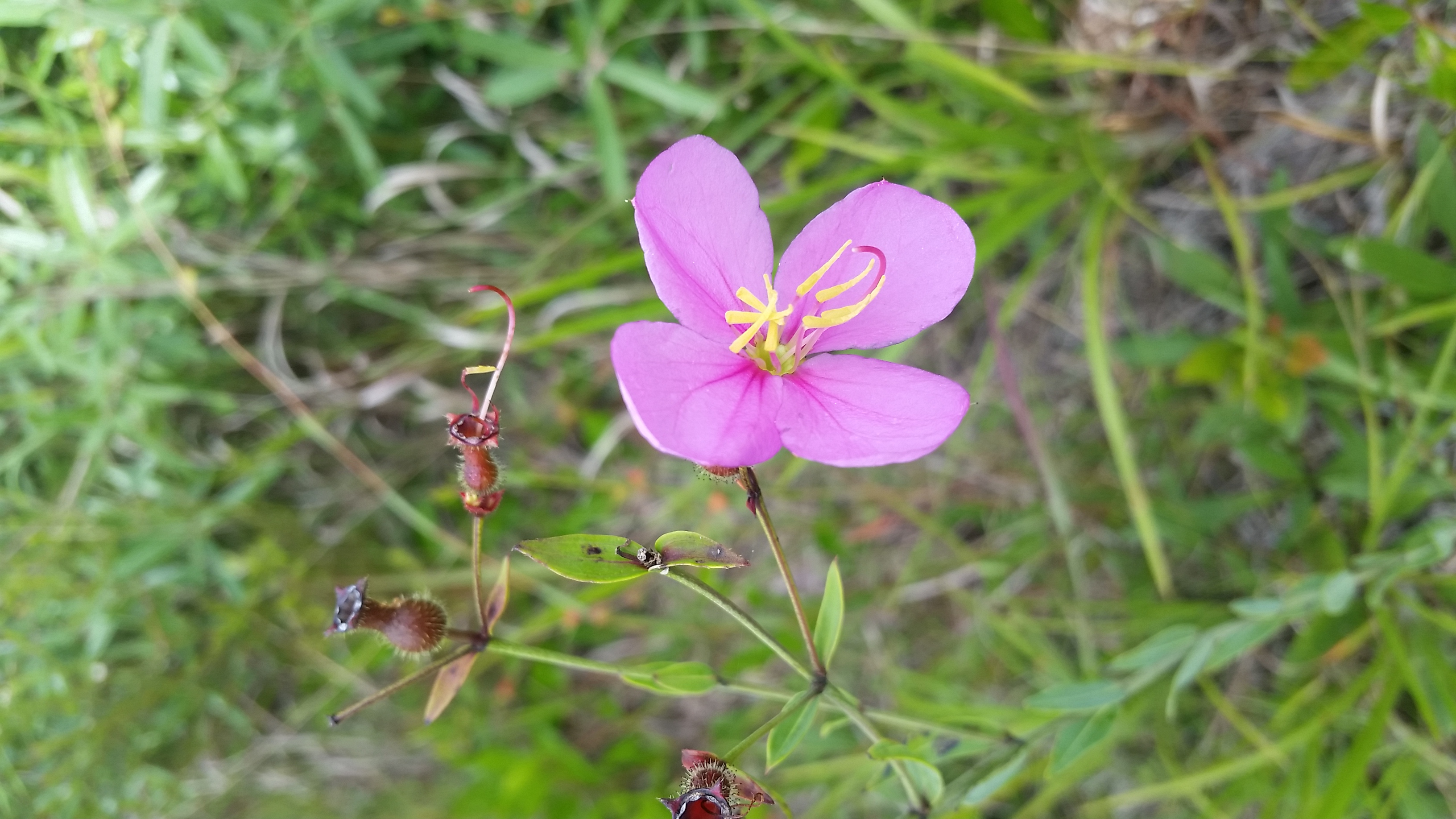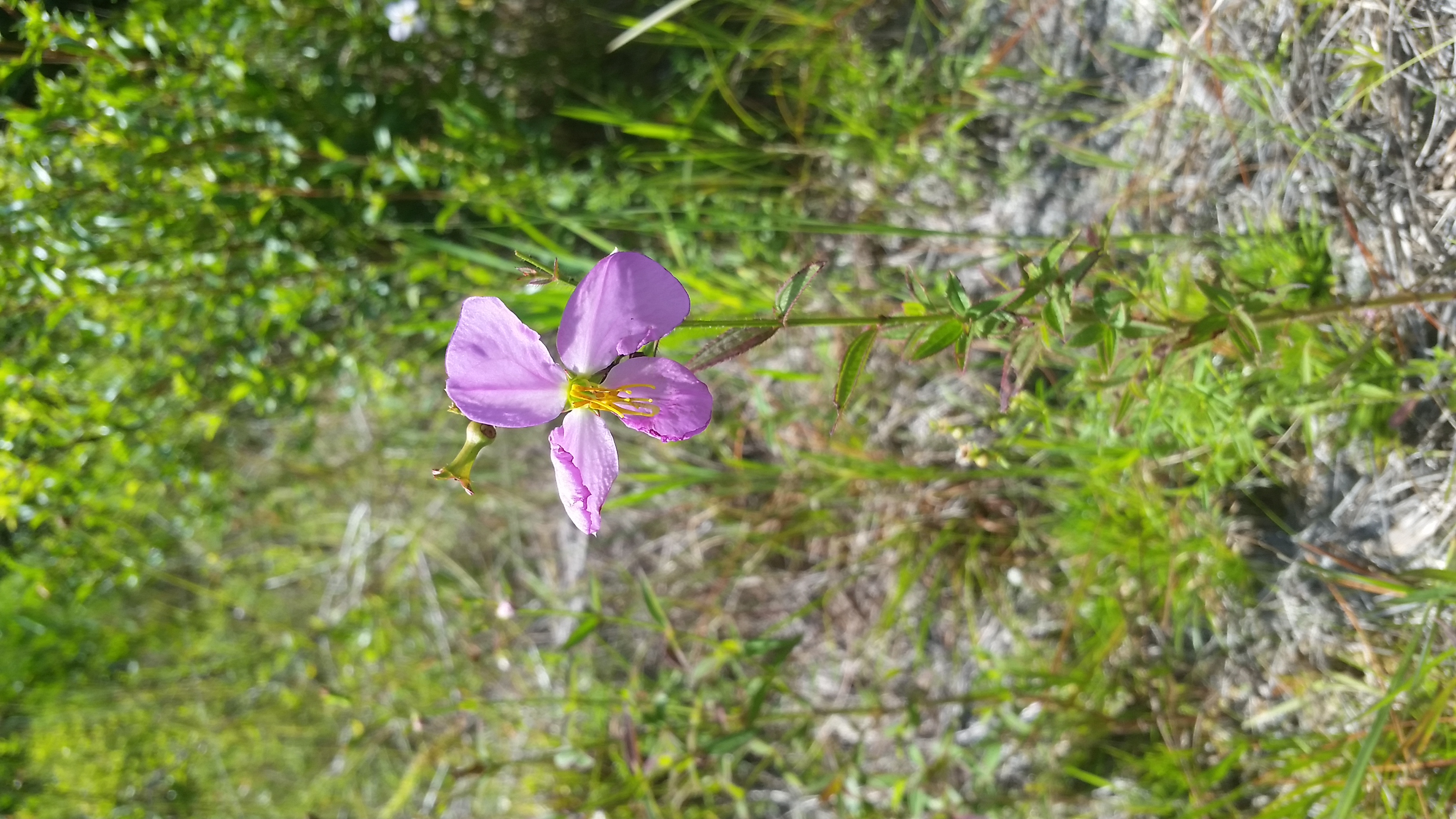Difference between revisions of "Rhexia mariana"
Krobertson (talk | contribs) |
|||
| Line 18: | Line 18: | ||
}} | }} | ||
| − | Common | + | Common names: Maryland meadow-beauty, Pale Meadow-beauty, Dull Meadow-beauty |
==Taxonomic notes== | ==Taxonomic notes== | ||
Synonyms: ''Rhexia mariana'' var. ''leiosperma'' Fernald & Griscom; ''R. delicatula'' Small | Synonyms: ''Rhexia mariana'' var. ''leiosperma'' Fernald & Griscom; ''R. delicatula'' Small | ||
Revision as of 14:42, 15 September 2016
| Rhexia mariana | |
|---|---|

| |
| Photo taken by Michelle M. Smith, Thomasville, Georgia | |
| Scientific classification | |
| Kingdom: | Plantae |
| Division: | Magnoliophyta - Flowering plants |
| Class: | Magnoliopsida – Dicotyledons |
| Order: | Myrtales |
| Family: | Melastomataceae |
| Genus: | Rhexia |
| Species: | R. mariana |
| Binomial name | |
| Rhexia mariana L. | |

| |
| Natural range of Rhexia mariana from USDA NRCS Plants Database. | |
Common names: Maryland meadow-beauty, Pale Meadow-beauty, Dull Meadow-beauty
Contents
Taxonomic notes
Synonyms: Rhexia mariana var. leiosperma Fernald & Griscom; R. delicatula Small
Description
R. mariana is distinguished from R. cubensis by not having cubensis seeds, and having narrower leaves, uniformly smaller flowers, and a smaller hypanthia. It has been observed to be non-tuberiferous and rhizomatous. It is also capable of forming clones.[1]
"Erect, herbaceous, hermaphroditic, cymose perennials. Leaves opposite, sessile or petioles to 2 mm long. Flowers 4-merous, floral parts perigynous; stamens 8, anthers 1-locular, poricidal, usually with a basal spur. Capsules globose or subglobose; hypanthium cylindrical in anthesis, urceolate at maturity; stipes or pedicels 2-4.5 mm long; seeds brownish or yellowish, crescent-shape, papillose lined, 0.5-1 mm long except for R. petiolate and R. alifanus." [2]
"Hirsute branches or unbranched perennial; frequently colonial from elongate, horizontal roots; stems to 8 dm tall, faces unequal. Leaves linear, elliptic, lanceolate, ovate, or obovate, to 6.5 cm long and 2 cm wide, sparsely hirsute, 3-nerved, acute, ciliate-serrate, base rounded to attenuate. Sepals linear, 1-2.5 mm long; petals purplish to white, 10-25 mm long; anthers 6-10 mm long. Capsules 4.5-7 mm in diam., hypanthium usually 6-10 mm long, glandular hirsute or glabrous, neck ca. equaling body." [2]
Distribution
Distributed in the Coastal Plain from eastern Massachusetts south to Florida and across to Texas.[3]
Ecology
Habitat
In the Coastal Plain, Rhexia mariana has occurred in titi swamps, pine-saw palmetto flatwoods, sedgy swales in ancient dunes, shaded areas adjacent to cypress ponds, river floodplain forests, a clearing by a cypress-titi swamp, pine flatwoods, seepage bogs, pond margins, saw palmetto savanna bogs, open lake flats, live oak-longleaf pine woodlands, mixed hardwood/cabbage palm hammocks, turkey oak/longleaf pine scrubs and boggy seepage slopes. It has been observed in disturbed sites such as railroad banks bordering low pinelands, moist roadside ditches, secondary grazed upland hammocks, and bulldozed slash pine-saw palmetto flatwoods. Soil types include white sand, sandy peat, loamy sand, sandy loam and loam. Associated species include Rhexia cubensis, Eleocharis melanocarpa, Ilex, Andropogon, Pinus palustris, Panicum, Hyptis, Eriocaulon, Aletris, Sabatia bartamii, Manisuris rugosa, Rhynchospora, Myrica, Magnolia virginiana, Persea borbonia, Smilax, Liatris spicata, Hypericum gymnathum, Juncus, and sweetgum.[1]
Phenology
Flowers and fruits May through October.[1]
Seed dispersal
Fruits are dry and dehiscent.[4] According to Kay Kirkman, a plant ecologist, this species disperses by gravity. [5]
Seed bank and germination
Seeds and rhizomes are able to persist in the soil for several years until conditions are ideal for germination.[6]
Fire ecology
Rhexia mariana has been observed growing in annually burned longleaf pinewoods and a burned bayhead.[1]
Pollination
The following Hymenoptera families and species were observed visiting flowers of Rhexia mariana at Archbold Biological Station: [7]
Apidae: Bombus impatiens
Halictidae: Augochloropsis anonyma, A. metallica
Use by animals
Foliage is eaten by dear.[6]
Conservation and management
Cultivation and restoration
Photo Gallery
References and notes
- ↑ 1.0 1.1 1.2 1.3 Florida State University Robert K. Godfrey Herbarium database. URL: http://herbarium.bio.fsu.edu. Last accessed: November 2015. Collectors: P. Adams, Loran C. Anderson, Wilson Baker, R.R. Bounds, Jane Brockmann, Andre F. Clewell, R.A. Davidson, D.L. Fichtner, H.E. Grelen, Robert K. Godfrey, R.D. Houk, C.W. James, Gary R. Knight, R. Komarek, Robert Kral, O. Lakela, C.W. James, John Morrill, T. Myint, R.A. Norris, Jackie Patman, Gwynn W. Ramsey, James D. Ray Jr., P.L. Redfearn, Cecil R. Slaughter, R.R. Smith, R.F. Thorne, E. Tyson, Jean W. Wooten. States and Counties: Florida: Bay, Brevard, Calhoun, Citrus, Collier, Columbia, DeSoto, Dixie, Escambia, Flagler, Franklin, Gadsden, Glades, Hernando, Hillsborough, Holmes, Indian River, Jackson, Jefferson, Lafayette, Lee, Leon, Levy, Liberty, Madison, Pasco, Polk, Putnam, Sumter, Taylor, Wakulla, Washington. Georgia: Grady, Thomas. North Carolina: Wilson. Compiled by Tall Timbers Research Station and Land Conservancy.
- ↑ 2.0 2.1 Radford, Albert E., Harry E. Ahles, and C. Ritchie Bell. Manual of the Vascular Flora of the Carolinas. 1964, 1968. The University of North Carolina Press. 743. Print.
- ↑ [[1]] Lady Bird Johnson Wildflower Center. Accessed: March 7, 2016
- ↑ [[2]]Go Botany. Accessed: March 7, 2016
- ↑ Kay Kirkman, unpublished data, 2015.
- ↑ 6.0 6.1 [[3]]Accessed: March 7, 2016
- ↑ Deyrup, M.A. and N.D. 2015. Database of observations of Hymenoptera visitations to flowers of plants on Archbold Biological Station, Florida, USA.

